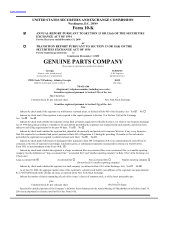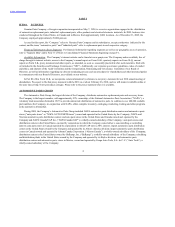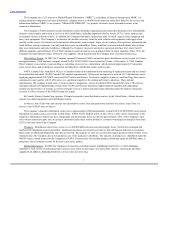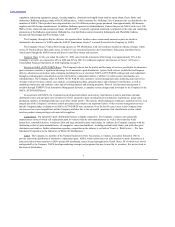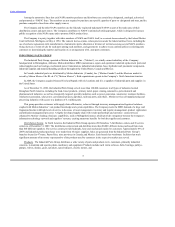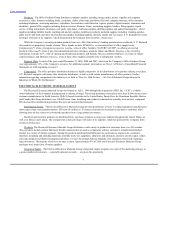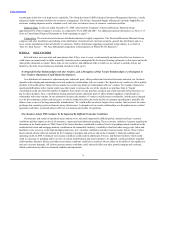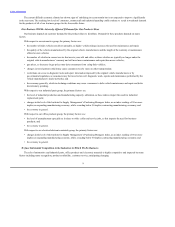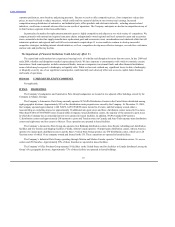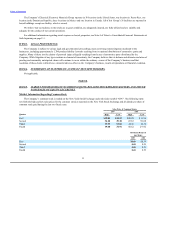Napa Auto Parts 2009 Annual Report Download - page 10
Download and view the complete annual report
Please find page 10 of the 2009 Napa Auto Parts annual report below. You can navigate through the pages in the report by either clicking on the pages listed below, or by using the keyword search tool below to find specific information within the annual report.
Table of Contents
customer preferences, store location, and pricing pressures. Because we seek to offer competitive prices, if our competitors reduce their
prices, we may be forced to reduce our prices, which could result in a material decline in our revenues and earnings. Increased
competition among distributors of automotive and industrial parts, office products and electronic materials, including internet-related
initiatives, could cause a material adverse effect on our results of operations. The Company anticipates no decline in competition in any of
its four business segments in the foreseeable future.
In particular, the market for replacement automotive parts is highly competitive and subjects us to a wide variety of competitors. We
compete primarily with national and regional auto parts chains, independently owned regional and local automotive parts and accessories
stores, automobile dealers that supply manufacturer replacement parts and accessories, mass merchandisers and wholesale clubs that sell
automotive products and regional and local full service automotive repair shops. If we are unable to continue to develop successful
competitive strategies, including internet related initiatives, or if our competitors develop more effective strategies, we could lose customers
and our sales and profits may decline.
The capital and credit markets have experienced varying levels of volatility and disruption for more than two years. In late 2008 and
early 2009, volatility and disruptions reached unprecedented levels. We have exposure to counterparties with which we routinely execute
transactions. Such counterparties include commercial banks, insurance companies, investment funds and other financial institutions,
some of which may be exposed to bankruptcy or liquidity risks. While we have not realized any significant losses to date, a bankruptcy
or illiquidity event by one of our significant counterparties could materially and adversely affect our access to capital, future business
and results of operations.
Not applicable.
The Company’s headquarters and Automotive Parts Group headquarters are located in two adjacent office buildings owned by the
Company in Atlanta, Georgia.
The Company’s Automotive Parts Group currently operates 58 NAPA Distribution Centers in the United States distributed among
eight geographic divisions. Approximately 90% of the distribution center properties are owned by the Company. At December 31, 2009,
the Company operated approximately 1,000 NAPA AUTO PARTS stores located in 43 states, and the Company owned either a
noncontrolling or controlling interest in approximately 19 additional auto parts stores and three distribution centers located in five states.
Other than NAPA AUTO PARTS stores located within Company owned distribution centers, the majority of the automotive parts stores
in which the Company has an ownership interest were operated in leased facilities. In addition, NAPA Canada/UAP operates
12 distribution centers and approximately 208 automotive parts and Traction stores in Canada, and Auto Todo operates nine distribution
centers and eight stores and tire centers in Mexico. These operations are operated in leased facilities.
The Company’s Automotive Parts Group also operates four Balkamp distribution centers, three Rayloc rebuilding and distribution
facilities and two transfer and shipping facilities. Finally, Altrom Canada operates 15 import parts distribution centers, Altrom America
operates two import parts distribution centers and the Heavy Vehicle Parts Group operates one TW distribution center, which serves 24
Traction stores of which 16 are company owned and located in the US. These operations are operated in leased facilities.
The Company’s Industrial Parts Group, operating through Motion and Motion Canada, operates 7 distribution centers, 36 service
centers and 458 branches. Approximately 90% of these branches are operated in leased facilities.
The Company’s Office Products Group operates 38 facilities in the United States and five facilities in Canada distributed among the
Group’s five geographic divisions. Approximately 75% of these facilities are operated in leased buildings.
10

